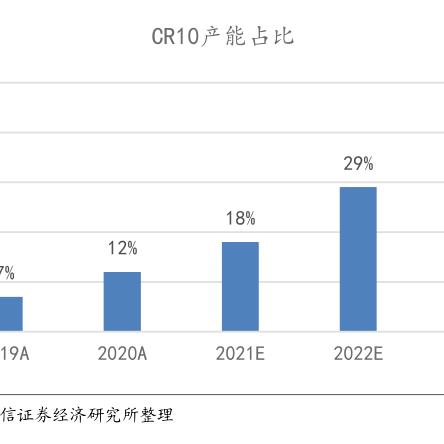The financial landscape is rapidly evolving, with investors, institutions, and individuals exploring diverse options to safeguard their wealth amidst economic uncertainties. The sentiment towards the traditional safe-haven asset, gold, and the relatively newer digital currencies has been gaining traction. This comprehensive guide aims to detail the contrasting nature of these investment options by 2025, examining the 'gold rush' for避险 purposes and the volatility of digital currencies. Let's delve into this prospect from an official viewpoint, dissecting the nuances of both assets in the pursuit of financial stability.
Introduction to Capital Preservation in 2025
As we approach the mid-point of the decade, capital preservation becomes an increasingly crucial strategy for retail and institutional investors worldwide. In the quest to protect assets from unforeseen market volatilities and economic downturns, two assets have consistently been at the forefront of public discourse—gold and digital currencies. The year 2025 is poised to offer a unique perspective on how these assets perform under different global financial conditions.
Gold: The Traditional Safe-Haven Asset
Gold has been revered for centuries as a store of value and a reliable safe-haven during times of economic turmoil.
Its intrinsic properties of being a tangible asset, with limited supply and recognized value across cultures, render it a sought-after commodity amidst currency devaluations and market volatility.
Properties of Gold as a Safe-Haven
Gold's role as a safe-haven is multifaceted. It typically maintains or increases in value during economic downturns and periods of high inflation. This characteristic, coupled with its low correlation with other asset classes, positions gold as a valuable portfolio diversifier and risk management tool.
The 2025 Gold Scenario
Looking ahead, official projections suggest that gold could maintain its allure, especially with the potential for increasing geopolitical tensions and economic uncertainties. However, the difficulty lies in predicting the exact scenarios that could lead to a 'gold rush'. International trade dynamics, inflation rates, and central bank policies will heavily influence gold's performance and demand.
The Emergence of Digital Currencies
The rise of digital currencies, particularly Bitcoin, represents a seismic shift in how individuals and entities perceive and engage with financial assets.
While digital currencies like Bitcoin are still relatively young and often associated with extreme price volatility, they are increasingly recognized as a new form of digital gold or an alternative investment with its own set of risks and rewards.
Characteristics and Volatility of Digital Currencies
Digital currencies vary significantly in their technological foundations, market reception, and price stability. Bitcoin, often heralded as digital gold due to its finite supply and decentralized nature, can experience dramatic price swings. These volatility patterns are influenced by factors such as market sentiment, regulatory developments, and technological advancements in the blockchain space.
The 2025 Digital Currency Outlook
As digital currencies mature, their volatility is anticipated to potentially decrease. However, the asset class is not expected to become as stable as traditional safe-havens like gold. Legal frameworks, market adoption, and technological advancements will play critical roles in shaping the future of digital currencies. By 2025, investors might have a clearer understanding of the risks and opportunities associated with digital currencies, including their role as potential safe-havens.
Comparative Analysis of Gold and Digital Currencies
The juxtaposition of gold and digital currencies presents investors with contrasting avenues for capital preservation. This comparative analysis is essential in gauging the suitability of each asset class for避险 purposes.
Risk Assessment
Risk assessment is a critical component when considering gold and digital currencies. While gold has historically been a stable store of value, the risk in its price fluctuations is relatively low. Digital currencies, conversely, present a higher risk profile due to their price volatility and the nascent regulatory environment. Understanding the risk dynamics of both assets is pivotal for investors.
Investment Thesis
The investment thesis for gold typically revolves around wealth preservation, diversification, and hedging against inflation. Digital currencies, on the other hand, often appeal to investors looking for high potential returns and exposure to new technologies. Investors must balance their investment thesis against the actual performance and stability of each asset class.
The Role of Regulatory Environment
The regulatory landscape plays a formidable role in shaping the future of both gold and digital currencies. As governments and financial institutions worldwide grapple with the implications of digital currencies, the official viewpoints on their governance and integration into the financial system are rapidly evolving.
Regulatory Outlook for 2025
By 2025, it's conceivable that greater regulatory clarity may be achieved for digital currencies. This could lead to increased investor confidence and a more stable market environment. However, the regulatory approach to gold as a避险 asset has been long-established and is less likely to experience the same level of flux as digital currencies.
Investment Strategies for 2025
Given the diverse profiles of gold and digital currencies, it is essential to formulate tailored investment strategies that align with individual risk tolerance and capital preservation objectives. Diversification, risk management, and a keen understanding of market dynamics are key components of a robust investment strategy.
Diversification and Portfolio Allocation
Diversification through a balanced portfolio, comprising both traditional assets like gold and alternative investments such as digital currencies, can offer a spread of exposure to various market cycles and conditions. Portfolio allocation strategies should consider the performance correlations between these two asset classes to minimize risk and maximize returns.
Risk Management Techniques
Establishing prudent risk management techniques is vital, especially when dealing with assets exhibiting high volatility, like digital currencies. Investors may consider options such as stop-loss orders, derivatives, or other risk mitigation strategies to navigate the inherent uncertainties in these markets.
Conclusion
In summation, the 2025 landscape for避险 assets is poised to be as dynamic as it is speculative. Gold, the tried-and-true safe-haven, faces competition from digital currencies, which are vying for legitimacy and acceptance in global finance. Investors must weigh the unique characteristics, risks, and potential rewards of each asset class in crafting their investment strategies. As economic conditions and officially viewpoints continue to evolve, so too will the paradigm of financial避险. Staying abreast of these changes, along with developing a well-informed and adaptable approach, will be key to navigating the complex terrain of capital preservation by 2025.
















 琼ICP备2023003230号-1
琼ICP备2023003230号-1
还没有评论,来说两句吧...